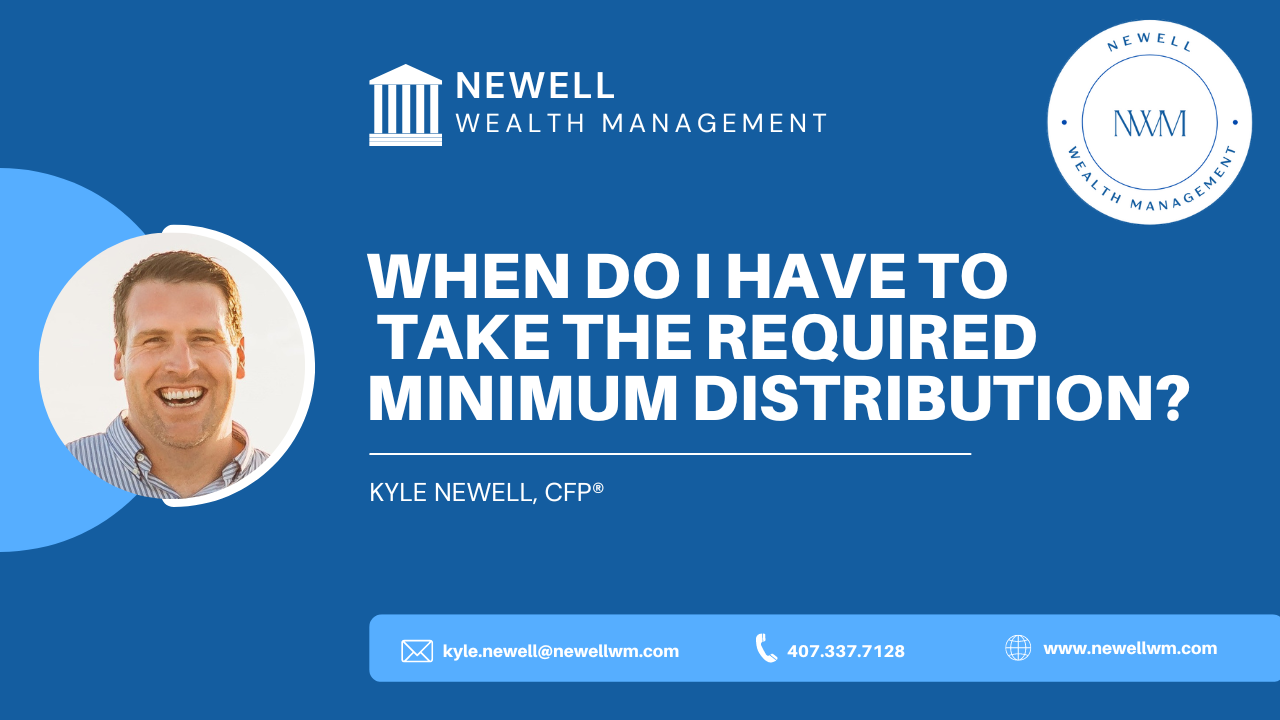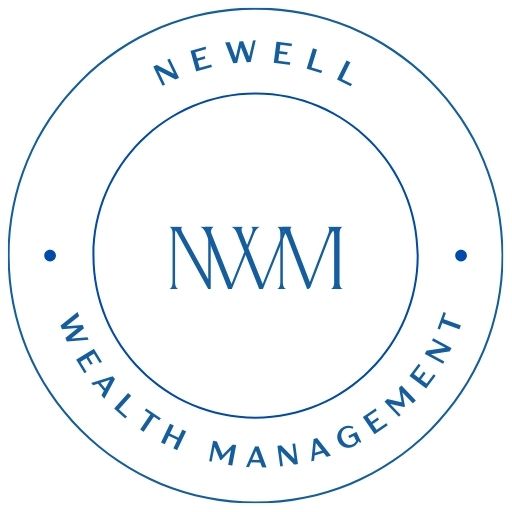When Do I Have to Take the Required Minimum Distribution?

You may not be aware of a potential “tax bomb,” as some people have called it, once you are retired. It’s something crucial and pivotal to know about and understand. What is it? The required minimum distribution, or RMD.
It may be surprising to learn that Congress and the IRS force you to take income out of your savings annually, whether that’s a traditional 401k, traditional IRA, or even a 403b once you turn a certain age. There have been many changes recently regarding the required minimum distribution.

The Secure Act 2.0
When looking at retirement, you need to look at your birth year and age to plan for the required minimum distribution, which is a specific amount based on how old you are that year. This is due to the passage of the Secure Act 2.0, which raised the required minimum distribution age from 72 to 75, based on the year you were born.
There are many rules when it comes to the required minimum distribution. There is a table the IRS uses to calculate how much you have to take out. You will commonly hear the required minimum distribution referred to as RMD. I will use the acronym interchangeably as we begin to talk through some of what you need to know.
What Is a Required Minimum Distribution (RMD)?
The government wants you to pay taxes on your traditional retirement savings accounts. Initially, they incentivized you to put the money into a traditional account in return for tax savings on that amount of money.
From the time you put the money into the traditional retirement account, you have not paid taxes on the money. When you reach your 70s, and the money has hopefully grown, the government wants you to start taking the money so they can receive the taxes you will owe. If you start by waiting until the RMD, it may be much more than you expect or want to spend.
When Do You Need to Take It?
Knowing the age when you are required to take out the money is essential in your planning. The IRS and Congress just updated when one has to start taking the RMD, which is also based on your birth year. The original age was between 70 ½ and 72 for those born prior to 1951, depending on the birth year. Here are a couple of examples based on the changes.
1951 birth years have an RMD at age 73
1961 births years have an RMD at age 75
Many clients have other sources of income, such as tax-deferred or non-taxable assets, pensions, Social Security, etc., that cover the retirement income they need. Unfortunately, the regulations with the required minimum distribution sometimes force them to take out more income than they need or want.
Planning your future finances is key to enjoying retirement later. You may be younger and think that you won’t need to worry about it for a while. Planning earlier can help you be prepared and possibly help you take advantage.
What Are Some Ways to Avoid or Mitigate the RMD?
I’m often asked about ways to help with the RMD. Here are a few options you may want to discuss with your financial planner.
1) Qualified Charitable Distributions
If you have an IRA, one of the most charitable ways is a qualified charitable distribution. This option is only available for IRA accounts. 401k accounts are not eligible for this benefit.
A qualified charitable distribution allows you to give up to $100,000 a year to your chosen charity. This amount counts toward your RMD. It’s important to know that this option can still start at age 70 ½, which was the age before the recent changes.
Congress likes the idea of people giving to charity because charitable organizations do a lot of good for society. One of the ways the government gives you the incentive to give to charity is by allowing the RMD charitable contribution. This option also means the charity can be funded by someone other than the government.
2) Annuity Contracts
Annuity contracts allow you to purchase an annuity that will basically be used for longevity down the road. This option has been less appealing recently, but if you may have a large RMD, it’s good to know this is a potential option.
For instance, many people retiring from Disney may have a pension. Their pension and Social Security end up being enough for the living costs. They may have a good amount of money in their old 401k or IRA. If they have to take income from it due to the RMD, it could be a more significant amount of money and extra taxable income that they may not want to take on.
3) Aggregating Your RMD
I offer this last because aggregating your RMDs is not something you can always do. What do I mean?
For example, let’s say your traditional accounts total $1 Million, and your RMD for that year is $45,000. You might have one or two 401k’s from other companies and an IRA you own or inherited. Each type of account has its own separate set of rules.
You must be careful about how and when you take your RMD out. Sometimes you can combine your accounts to meet the RMD, but not always. Talk with your financial planner to understand what you can and can’t do.
Final Thoughts on RMD
Upon your passing, there may be RMDs that your beneficiary may need to take when it comes to traditional accounts. There are also new and specific rules that took effect last year and in 2018’s Act concerning beneficiary RMDs.
It’s important to consider who is receiving the assets you leave behind. Whether it’s an old 401k or IRA, you’ve got to be careful of the following:
- Who is the beneficiary
- How old are they
- What assets are they receiving
- What the RMD tax ramifications will be for them
As a beneficiary, they may be impacted by having to take required minimum distributions on their inherited asset for some time. Understanding RMDs and how each person will be affected is integral to your financial planning.
If you would like guidance from an experienced financial planner, I’m happy to help.
Important Information
Newell Wealth Management, LLC (“NWM”) is a registered investment advisor offering advisory services in the State of FL and in other jurisdictions where exempted. Registration does not imply a certain level of skill or training. The presence of this website on the Internet shall not be directly or indirectly interpreted as a solicitation of investment advisory services to persons of another jurisdiction unless otherwise permitted by statute. Follow-up or individualized responses to consumers in a particular state by NWM in the rendering of personalized investment advice for compensation shall not be made without our first complying with jurisdiction requirements or pursuant an applicable state exemption.
All written content on this site is for information purposes only and is not intended to provide specific advice or recommendations for any individual. Opinions expressed herein are solely those of NWM, unless otherwise specifically cited. Kyle Newell and NWM are neither an attorney nor an accountant, and no portion of this website content should be interpreted as legal, accounting or tax advice. Material presented is believed to be from reliable sources and no representations are made by our firm as to other parties’ informational accuracy or completeness. There is no assurance that the views or strategies discussed are suitable for all investors or will yield positive outcomes. Investment involves risks including possible loss of principal and unless otherwise stated, are not guaranteed. Any economic forecasts set forth may not develop as predicted and are subject to change. All information or ideas provided should be discussed in detail with an advisor, accountant or legal counsel prior to implementation.
